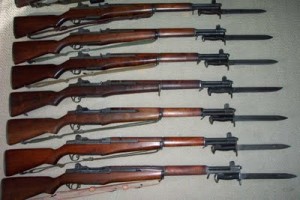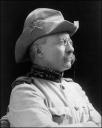One of the things I dislike intensely is the attempt to re-write history.
The assertion that the 2nd amendment was never intended to allow private citizens to own military style weapons is a particularly obnoxious, ideologically-driven example of willful ignorance.
Other writers have done extensive research on the intentions and meanings of the amendment to those who proposed, adopted & ratified the amendments in 1791.
 Overlooked in the debate (at least so far I haven’t seen any citation) has been the quiet, ongoing work of providing military rifles and training to citizens carried out by the Civilian Marksmanship Program for the past 110 years. Recently converted to a congressionally chartered 501(c)(3) corporation, the CMP continues to receive donated .22 and .30 caliber rifles directly from the US Army and provides them at cost to civilians. Before 1996, the CMP was administered directly by the US Army.
Overlooked in the debate (at least so far I haven’t seen any citation) has been the quiet, ongoing work of providing military rifles and training to citizens carried out by the Civilian Marksmanship Program for the past 110 years. Recently converted to a congressionally chartered 501(c)(3) corporation, the CMP continues to receive donated .22 and .30 caliber rifles directly from the US Army and provides them at cost to civilians. Before 1996, the CMP was administered directly by the US Army.
“Any U.S. citizen who is not legally prohibited from owning a firearm may purchase a military surplus rifle from the CMP, provided they are a member of a CMP affiliated club.” There are CMP clubs in all 50 states. There are 139 such clubs in TN alone.
The CMP has been providing military grade weapons to US citizens since 1903.
 The main infantry battle rifle of WW2, the Garand M1 has been available for years, and continues to be sold – including “sniper” models. You can also buy a Garand bayonet.
The main infantry battle rifle of WW2, the Garand M1 has been available for years, and continues to be sold – including “sniper” models. You can also buy a Garand bayonet.
Oh, and by the way, the M1 Garand clip (it uses a clip, not a magazine) holds 8 rounds. Every M1 Garand 8-round clip has just been declared a prohibited, contraband item by the New York state legislature – at the same time that the US government is supplying those clips from their armory surpluses to the CMP for sale to civilians.
Military-style rifles, with high-capacity clips, and not just bayonet lugs, but actual bayonets – sold the the US public by the US Army. The horrors!
And a stubborn fact that destroys the argument that the 2nd amendment was never intended to allow civilians to own military-style rifles.

